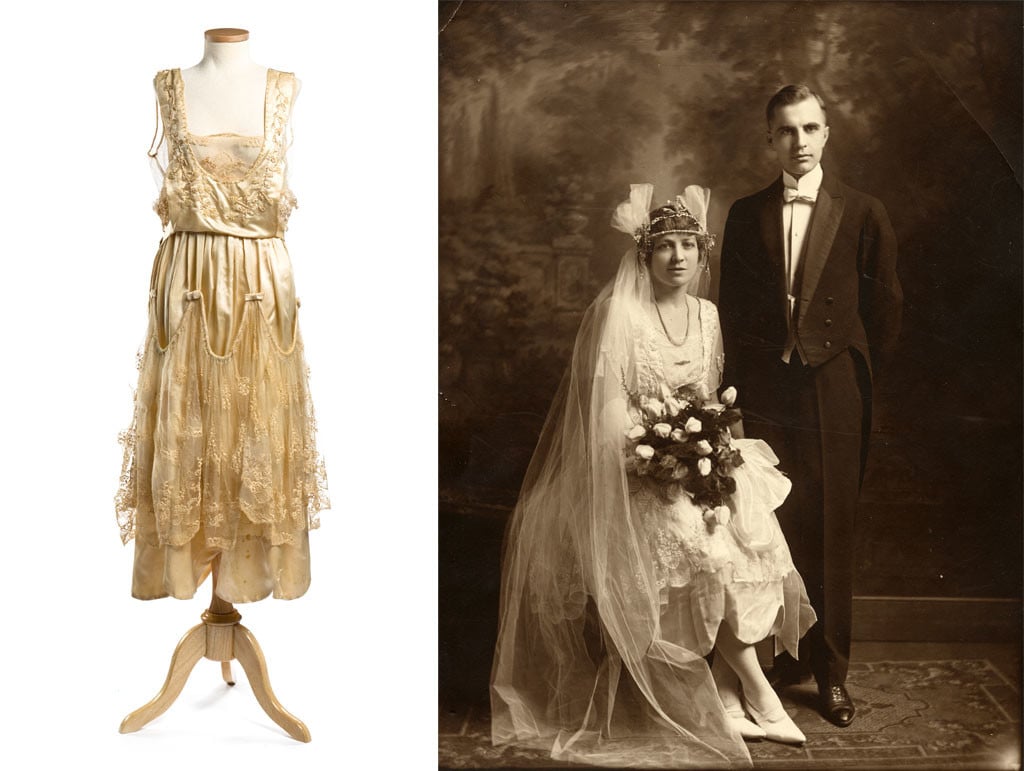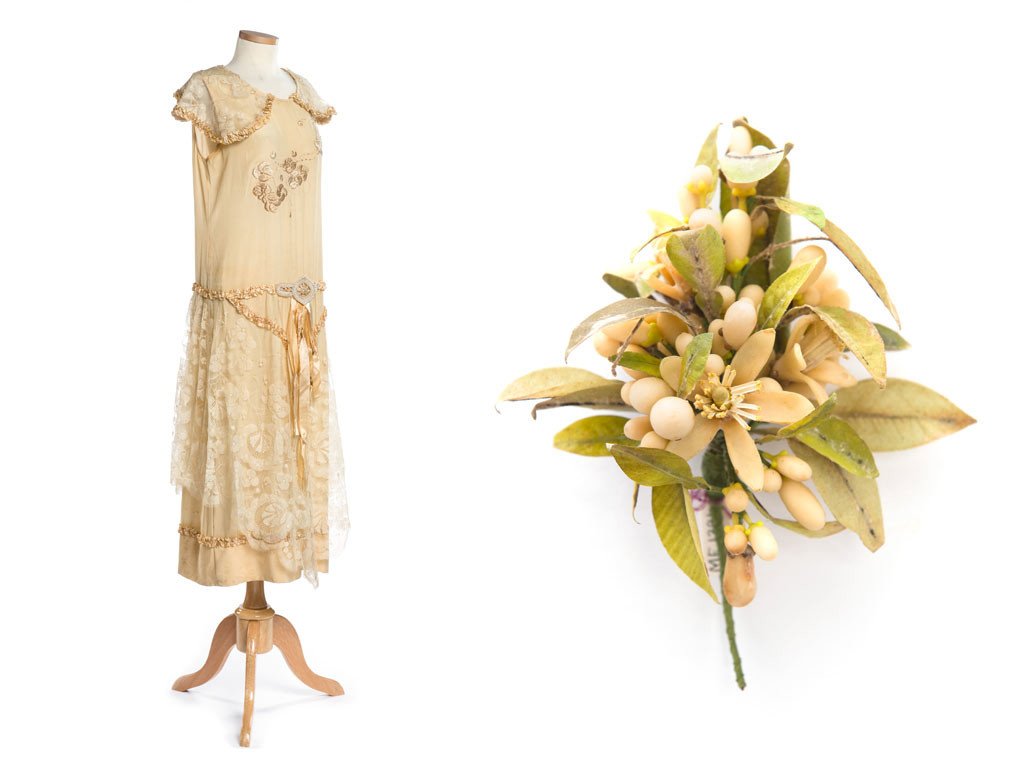1920s Wedding Dresses
PAST EXHIBIT
While preparing the garments for our upcoming wedding dress exhibit, it occurred to me that the gowns of the 1920s were probably the most dramatic departure from “traditional” attire. This was true of course in daily wear – it was the first time women were allowed to wear short skirts and the first time so little understructure was required. All this translates into wildly different wedding dresses.
The tubular sheath silhouette can be seen beautifully in the above beaded silk crepe dress, worn by Septima Toomer Holmes when she married Henry Francis Porcher on December 10, 1924. Their wedding was on a Wednesday at Grace Church in Charleston. Simply constructed, this gown is nevertheless stunning with it heavy beading, with white tubular glass beads forming the diamonds and gray seed beads in a spiral in the center of each. The hemline is zig zag, following the beading with a picot edging. The dress itself weighs over four pounds and would no doubt dazzle on the reception dance floor.
Another stunning example from the 1920s is this ivory satin dress with a very low scooped neckline echoed in the skirt panels. There is plenty of lace, silk embroidery and pearl beading. The true impact of the dress can be seen in the wedding portrait. It was worn by Annie Kangeter who married Dr. Charles D. Boette on Thursday, April 14, 1921 in Charleston. Annie’s sister, Mamie Pfaehler, made the dress. Unfortunately, the incredible headpiece is fragmentary and in very poor condition.
Another fabulous 1920s wedding dress is this low-waisted silk crepe dress with lace overskirt and beautiful silk embroidery. It was worn by Emily Gladys Canaday from Canaday’s Crossing who married William Edward Martens on Monday, April 27, 1925 in Charleston. William’s sister, Annie Martens Landry made the dress. From the center front waistline hang ten strips of ribbon of various lengths, each tied in a knot. These “love knots” were popular ornamentation for wedding attire; those on bouquets were often snipped as good luck charms by the wedding attendees. On two of these ribbons are entwined artificial orange blossoms, another traditional wedding symbol dating back to the Greek and Roman gods. Orange blossoms of wax, paper, leather and fabric are often worn in the hair, on the veil, or on the dress. Both Queen Victoria in 1840 and Jacqueline Bouvier Kennedy in 1953 followed this popular tradition.




